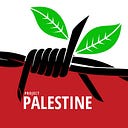Marking 19 years for the second Intifada, the memory lives on
The second Intifada went on for around 5 years, claiming the lives of thousands of Palestinians and the heavy destruction of their cities and institutions; and the building of the infamous Separation Wall that destroyed thousands of dunums of agricultural Palestinian lands.
by Yamin Noubani
RAMALLAH, (WAFA) — The memory of former Israeli Prime Minister Ariel Sharon, then head of the Likud Party, breaking, along with other Israeli right-wing officials, into Al-Aqsa Mosque in Jerusalem on September 28, 2000, still lives in the hearts and minds of Palestinians everywhere, who remember that event as the spark that triggered the second Palestinian intifada, or uprising, against the Israeli occupation.
Palestinians clashed with the Israeli forces providing protection to Sharon and his entourage resulting in dozens of injuries among the Palestinians and Israeli police.
The provocative visit came on a Thursday, and the next day was Friday, when thousands of Muslims usually attend the Friday prayer at Al-Aqsa Mosque, Islam’s third holiest site.
The Israeli police was present in full force in Jerusalem and particularly its Old City and Al-Aqsa Mosque. Their presence provoked the worshippers, and eventually resulted in serious confrontations during which the police was set at using lethal force against the worshippers killing six and wounding hundreds others.
Angry at the killings in Jerusalem, protests broke out the next day in all the occupied Palestinian territories. On this day, Israeli forces killed 13 protesters and injured over 600 others, and the day after they killed another 10 and wounded hundreds others.
This bloody scene spread to even the Palestinians in Israel, who came out on October 1 to protest the Israeli killing of dozens of their fellow Palestinians in the occupied territories. Israeli police reacted violently to the protests and shot dead 13 Palestinian citizens of Israel over the next few days.
With the large number of killings, the intifada took a more violent course as guns were used for the first time since the start of the peace process in the early 1990s and Israel, headed by Ariel Sharon, used warplanes to assassinate Palestinian fighters and leaders and destroy Palestinian buildings, while Palestinians resorted to suicide attacks inside Israel.
As a result, Israel reoccupied the Palestinian cities in the West Bank starting 2002, most prominently Ramallah, the base of the Palestinian Authority and its leader Yasser Arafat, who came under siege in his headquarters until his death in November 2004. It built the infamous separation wall that destroyed thousands of dunums of agricultural Palestinian lands and erected road blocks everywhere.
The intifada went on until 2005, when it ended with a renewed hope for revival of the peace process under the new leadership of President Mahmoud Abbas but not before it claimed the lives of thousands of Palestinians and the heavy destruction of their cities and institutions.
